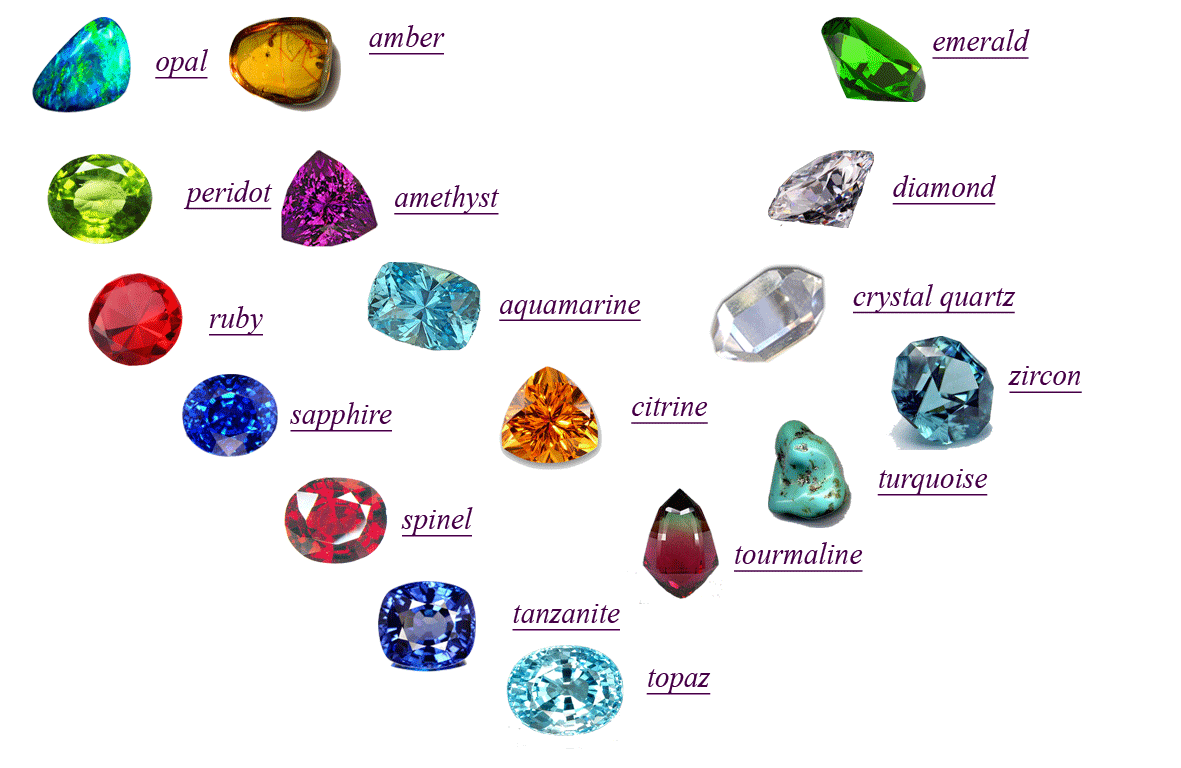Gemstones have captivated humanity for centuries, their allure transcending time and culture. These precious stones are more than just decorative pieces; they hold deep cultural, historical, and spiritual significance. The cast of gemstones includes an array of dazzling stones, each with its own unique properties and stories. If you're fascinated by the world of gemstones, this article will be your ultimate guide to understanding their beauty, value, and importance in today's market.
From ancient civilizations to modern-day collectors, gemstones have been revered for their rarity and beauty. Their vibrant colors and mesmerizing brilliance make them a staple in jewelry and investment portfolios. But beyond their aesthetic appeal, gemstones also carry symbolic meanings and healing properties that continue to intrigue enthusiasts worldwide.
In this article, we will explore the cast of gemstones in detail, covering their origins, classifications, and cultural significance. Whether you're a beginner or an experienced collector, this guide will provide valuable insights into the world of gemstones, helping you make informed decisions when purchasing or investing in these precious treasures.
Read also:Sabrina Carpenter Cheeks A Comprehensive Guide
Table of Contents
- Introduction to Gemstones
- Classification of Gemstones
- Popular Gemstones and Their Properties
- Historical Significance of Gemstones
- Cultural Impact of Gemstones
- Valuation of Gemstones
- Investing in Gemstones
- Caring for Your Gemstones
- Identifying Fake Gemstones
- The Future of Gemstones
Introduction to Gemstones
Gemstones are minerals or organic materials that are cut and polished to enhance their natural beauty. They are classified based on their mineral composition, rarity, and optical properties. The cast of gemstones includes both precious and semi-precious stones, each with its own unique characteristics.
In the world of jewelry, gemstones are often used as centerpieces for rings, necklaces, and bracelets. Their value is determined by factors such as color, clarity, cut, and carat weight. Some of the most sought-after gemstones include diamonds, rubies, sapphires, and emeralds, which are collectively known as the "big four" in the gemstone industry.
Understanding the basics of gemstones is essential for anyone interested in purchasing or investing in them. This section will provide an overview of what gemstones are, how they are formed, and their role in the global market.
How Gemstones Are Formed
Gemstones are formed through geological processes that occur deep within the Earth's crust. These processes involve heat, pressure, and the presence of specific minerals. Over millions of years, these conditions create the stunning crystals we admire today.
- Heat and Pressure: High temperatures and pressure cause minerals to crystallize, forming gemstones.
- Mineral Composition: The type of minerals present during the formation process determines the properties of the gemstone.
- Time: Gemstones require millions of years to form, making them incredibly rare and valuable.
Classification of Gemstones
Gemstones are classified into two main categories: precious and semi-precious. While this classification is somewhat outdated, it is still used in the industry to differentiate between the most valuable stones and those that are more affordable.
Precious Gemstones
Precious gemstones include diamonds, rubies, sapphires, and emeralds. These stones are highly valued due to their rarity, beauty, and durability. They are often used in high-end jewelry and are considered a symbol of wealth and status.
Read also:What Does It Mean To Slide Into Someones Dms A Comprehensive Guide
Semi-Precious Gemstones
Semi-precious gemstones encompass a wide range of stones, including amethyst, topaz, garnet, and turquoise. While they are less valuable than precious gemstones, they are still highly prized for their unique colors and properties. Many semi-precious stones are used in fashion jewelry and are accessible to a broader audience.
Popular Gemstones and Their Properties
The cast of gemstones includes a diverse array of stones, each with its own unique properties. Below is a list of some of the most popular gemstones and their characteristics:
- Diamond: Known for its unparalleled brilliance and hardness, the diamond is the most coveted gemstone in the world.
- Ruby: This fiery red stone symbolizes passion and love, making it a popular choice for engagement rings.
- Sapphire: Available in a variety of colors, the sapphire is most commonly associated with its deep blue hue.
- Emerald: With its lush green color, the emerald is a symbol of renewal and vitality.
- Amethyst: This purple gemstone is believed to have calming properties and is often used in meditation.
Historical Significance of Gemstones
Gemstones have played a significant role in human history, dating back to ancient civilizations. They were used as symbols of power, status, and spirituality. For example, the Egyptians believed that gemstones had magical properties and used them in their religious rituals.
In medieval Europe, gemstones were considered a sign of wealth and nobility. Kings and queens adorned themselves with elaborate jewelry made from precious stones. The discovery of new gemstone deposits during the colonial era further fueled the global demand for these treasures.
The Role of Gemstones in Ancient Cultures
Many ancient cultures attributed mystical powers to gemstones. The Greeks believed that amethyst could ward off drunkenness, while the Romans used sapphires as a talisman for protection. In India, gemstones were used in Ayurvedic medicine to balance the body's energies.
Cultural Impact of Gemstones
Gemstones continue to have a profound impact on modern culture. They are featured in high-fashion collections, celebrated in art, and revered in spiritual practices. The global gemstone market is estimated to be worth billions of dollars, with demand driven by both collectors and consumers.
In recent years, there has been a growing interest in sustainable and ethically sourced gemstones. Consumers are becoming more aware of the environmental and social impact of mining practices, leading to a shift towards responsible sourcing.
Modern Uses of Gemstones
Today, gemstones are used in a variety of applications beyond jewelry. They are incorporated into technology, such as in the production of lasers and watches. Additionally, many people use gemstones in alternative therapies, believing they have healing properties.
Valuation of Gemstones
The value of a gemstone is determined by several factors, including its rarity, quality, and demand. The "Four Cs" – color, clarity, cut, and carat weight – are the primary criteria used to evaluate gemstones. A stone with superior color and clarity will command a higher price than one with visible imperfections.
Market trends also play a role in determining gemstone prices. For example, the popularity of colored gemstones has increased in recent years, leading to higher demand and prices for stones like sapphires and emeralds.
Factors Affecting Gemstone Value
- Rarity: Gemstones that are rare and difficult to source are more valuable.
- Quality: Superior color, clarity, and cut enhance a gemstone's value.
- Demand: Market trends and consumer preferences influence gemstone prices.
Investing in Gemstones
Gemstones can be a lucrative investment opportunity for those who understand the market. Unlike stocks or real estate, gemstones offer a tangible asset that can appreciate in value over time. However, it is important to conduct thorough research and consult with experts before making an investment.
When investing in gemstones, consider factors such as provenance, certification, and market trends. A gemstone with a documented history and a certificate from a reputable laboratory will have greater value and authenticity.
Tips for Gemstone Investors
- Research the market and stay informed about trends.
- Consult with gemologists and appraisers for expert advice.
- Invest in high-quality stones with provenance and certification.
Caring for Your Gemstones
Proper care is essential to maintaining the beauty and value of your gemstones. Different stones require different care methods, depending on their hardness and sensitivity to chemicals. For example, emeralds are more fragile than diamonds and should be handled with care.
Regular cleaning and storage are important aspects of gemstone care. Use a soft cloth and mild soap to clean your gemstones, and store them in a safe, dry place to prevent damage.
Cleaning and Maintenance Tips
- Use a soft cloth and mild soap to clean your gemstones.
- Avoid exposing gemstones to harsh chemicals or extreme temperatures.
- Store gemstones in separate compartments to prevent scratching.
Identifying Fake Gemstones
With the rise in demand for gemstones, the market has seen an increase in counterfeit stones. It is important to know how to identify fake gemstones to avoid being scammed. Some common signs of fake gemstones include poor color quality, unnatural clarity, and incorrect weight.
To ensure authenticity, always purchase gemstones from reputable dealers and request a certificate of authenticity from a certified laboratory. A gemologist can also help you verify the authenticity of a stone using specialized equipment.
Signs of Fake Gemstones
- Poor color quality and unnatural clarity.
- Inconsistent weight and size.
- Lack of certification or provenance.
The Future of Gemstones
The future of gemstones looks promising, with advancements in technology and increased consumer awareness driving the industry forward. Lab-grown gemstones are becoming more popular as an ethical and sustainable alternative to mined stones. These stones have the same chemical composition and physical properties as natural gemstones but are created in a controlled environment.
As the global demand for gemstones continues to grow, the industry must adapt to changing consumer preferences and environmental concerns. By embracing innovation and responsible practices, the gemstone industry can ensure a bright future for these treasured stones.
Emerging Trends in the Gemstone Industry
- Lab-grown gemstones gaining popularity.
- Increased focus on sustainable and ethical sourcing.
- Integration of gemstones in technology and fashion.
Kesimpulan
In conclusion, the cast of gemstones is a fascinating world filled with beauty, history, and cultural significance. From their formation deep within the Earth's crust to their role in modern jewelry and investment, gemstones continue to captivate and inspire people around the globe.
We encourage you to explore the world of gemstones further and discover the perfect stone for your collection. For more information, feel free to leave a comment or share this article with your friends. Together, let's celebrate the timeless allure of gemstones!
References:
- GIA (Gemological Institute of America)
- International Gem Society
- World Jewelry Confederation


